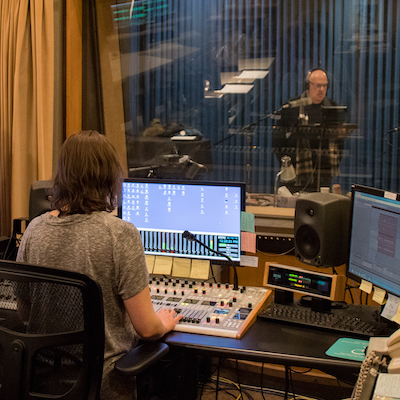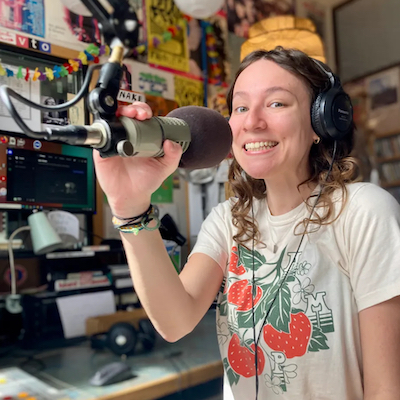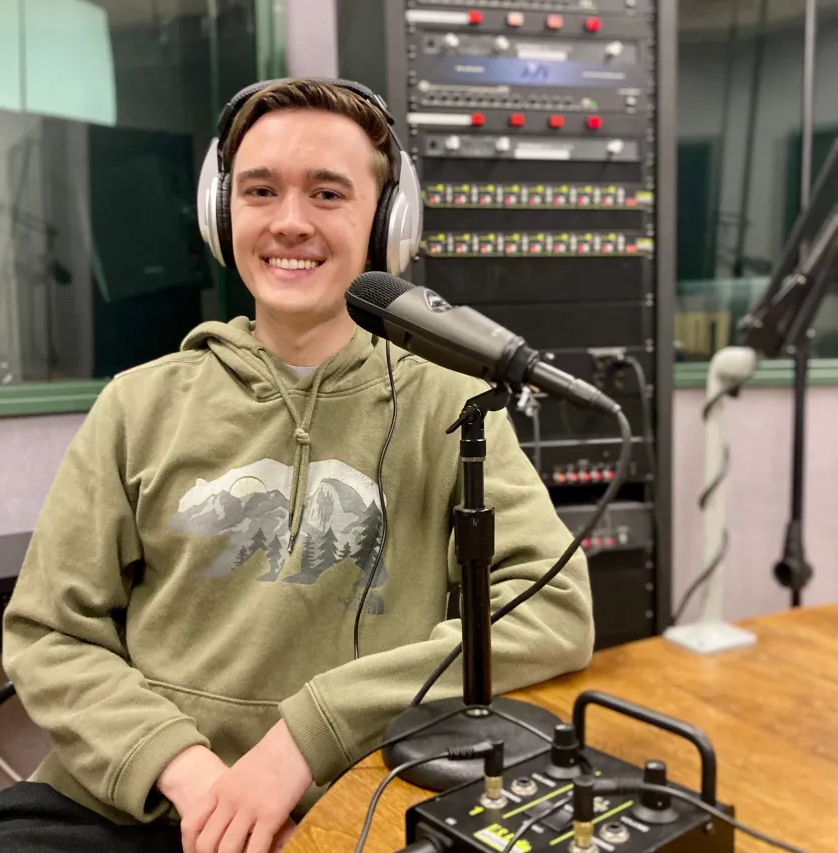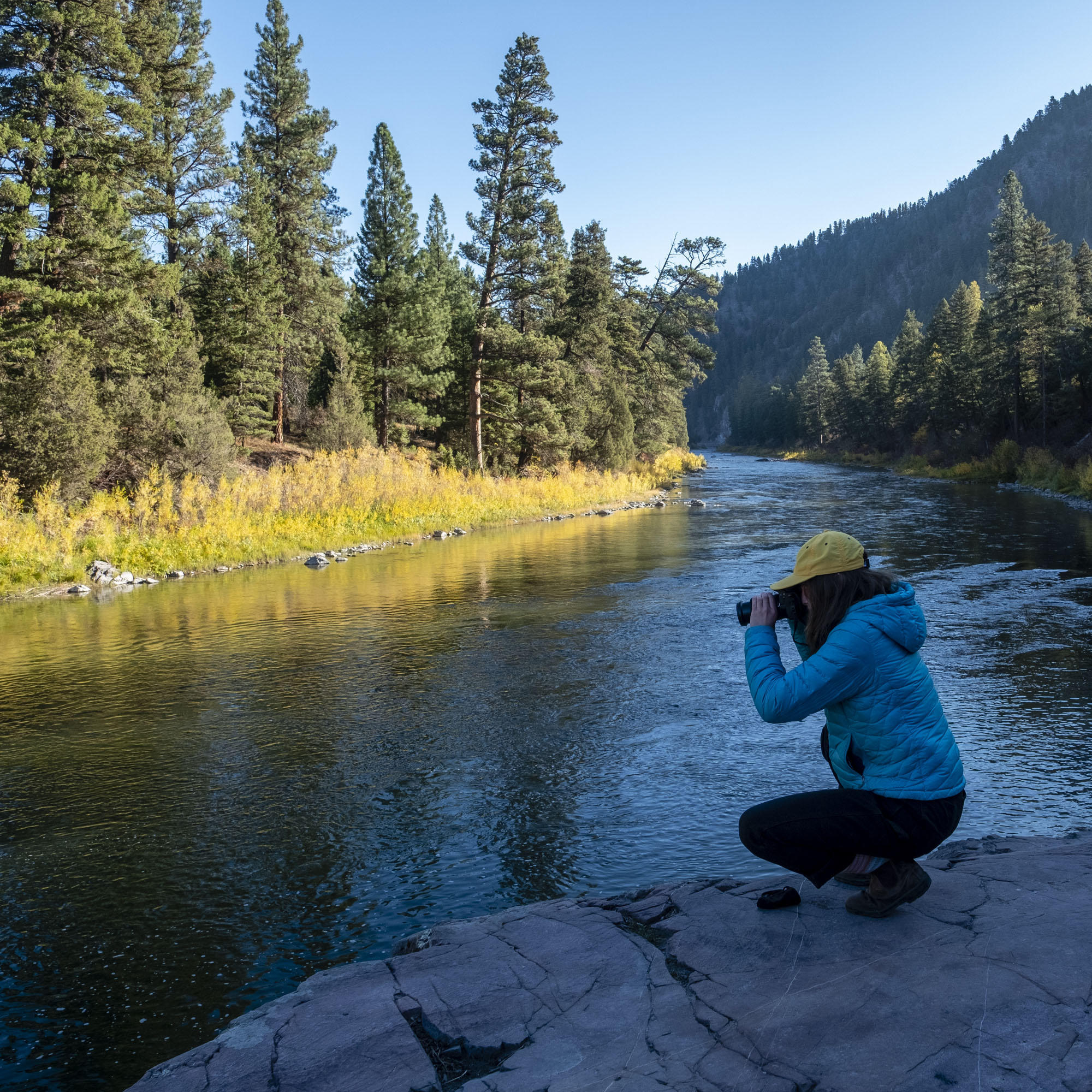Audio and Podcasting Track
In keeping to our philosophy that journalism is best taught in real life, students studying audio, radio and podcast journalism at the University of Montana hit the airwaves early in their college careers. They anchor the news on the college radio station KBGA, they intern as writers, reporters and hosts for Montana Public Radio, they create original podcasts with some of the nation's best audio journalists and they report daily for some 200 broadcasters from the Montana Legislature, just to highlight a few projects.
Job and Career Opportunities

Audio journalism is a rapidly-growing field. The Bureau of Labor Statistics estimates a 10% job growth in the next decade for broadcast, sound and video experts. And recent research from the Pew Research Center shows that demand for radio remains high, with 83% of Americans turning to radio every week and and a "substantially increased" podcast audience. More than 41% of Americans report listening to podcasts at least once a month, up from 9% in 2008.
Just some of the of jobs you'll be ready for after completing the audio track at the University of Motnana School of Journalism include: Reporter, Producer, Host, News Director, Script Writer, Podcaster, Editor, Audio engineer
The Student Experience
Senior Peyton Butler was sold on the audio track after interning for Montana Public Radio, which is housed at UM. She’s has also worked as the media director at the university radio station, KBGA, and as an intern with a podcast called Stories for Action.
Some of her best advice?

"I ... think just getting to know your professors is a really good way to get things done and to get knowledge that you might not even necessarily get from class. I’ll ask [Professor] Jule Banville questions about things I’m doing at KBGA and she’ll be like: ‘oh, you should try this.’ So just getting to know your professors and kind of building that relationship with them. And they can help you out a lot."
Recent Alumni

Nicky Ouellet, associate producer, NPR’s the Indicator
Nora Saks, producer, WBUR Podcasts, creator of award winning “Richest Hill” podcast
Autumn Barnes, producer, Hidden Brain podcast
Austin Amestoy (pictured at left), reporter and host, Montana Public Radio
Freddy Monares, KNKX Public Radio, Seattle
Shaylee Ragar, Capitol reporter, Montana Public Radio
Nathan Rott, reporter, NPR:
"The skills you learn at the J-School: how to write, how to think critically, how to ask smart questions, how to work on a deadline ... people are counting on you. Those are all things that are applicable to all careers.”
NPR reporter Nathan Rott
Courses
In the audio track, you'll start with the "core four" of the Journalism School (Media History and Literacy, Writing the News, Beginning Visual Journalism and Reporting the News,) then you branch out and start taking electives. Audio is a part of both Writing the News and Reporting the News.
We suggest starting with Intro to Audio, which fulfills a general education requirement, and then tackling Intermediate Audio and then Advanced Audio, which is a capstone course where you'll produce as a professional. In all of these courses, you'll create high-quality audio projects. Many of our students' stories are also published on the Public Radio Exchange.
We also encourage you to take some sonic arts classes in the School of Visual and Media Arts.
|
Course Type |
Course Number |
Course Title |
|---|---|---|
|
Lower-Division Required Coursed in Major |
JRNL 100H |
Media History and Literacy |
|
JRNL 170 |
Writing the News |
|
|
JRNL 257 |
Beginning Visual Journalism |
|
|
JRNL 270 |
Reporting the News |
|
|
Lower-Division Elective Suggested |
JRNL 140A |
Intro to Audio |
|
Upper-Division Required Courses in the Major |
JRNL 300 |
First Amendment and Journalism Law |
|
JRNL 400 |
Ethics and Trends in News Media |
|
|
JRNL 498 |
Supervised Internship |
|
|
Upper Division Writing Requirement Suggestion |
JRNL 340 |
Intermediate Audio |
|
Five Upper-Division Elective Requirement Suggestions |
JRNL 338 |
Intermediate Photo |
|
JRNL 332 |
Audience and Social Media |
|
|
JRNL 340 |
Intermediate Audio |
|
|
JRNL 362 |
Feature Writing |
|
|
JRNL 433 |
Marketing Your Work |
|
|
Capstone Requirement Suggestions |
JRNL 440 |
Advanced Audio |
|
Courses Outside JRNL Suggested |
MART 245 |
Intro to Sonic Arts |
|
MART 445 |
Sound for Digital Media |
